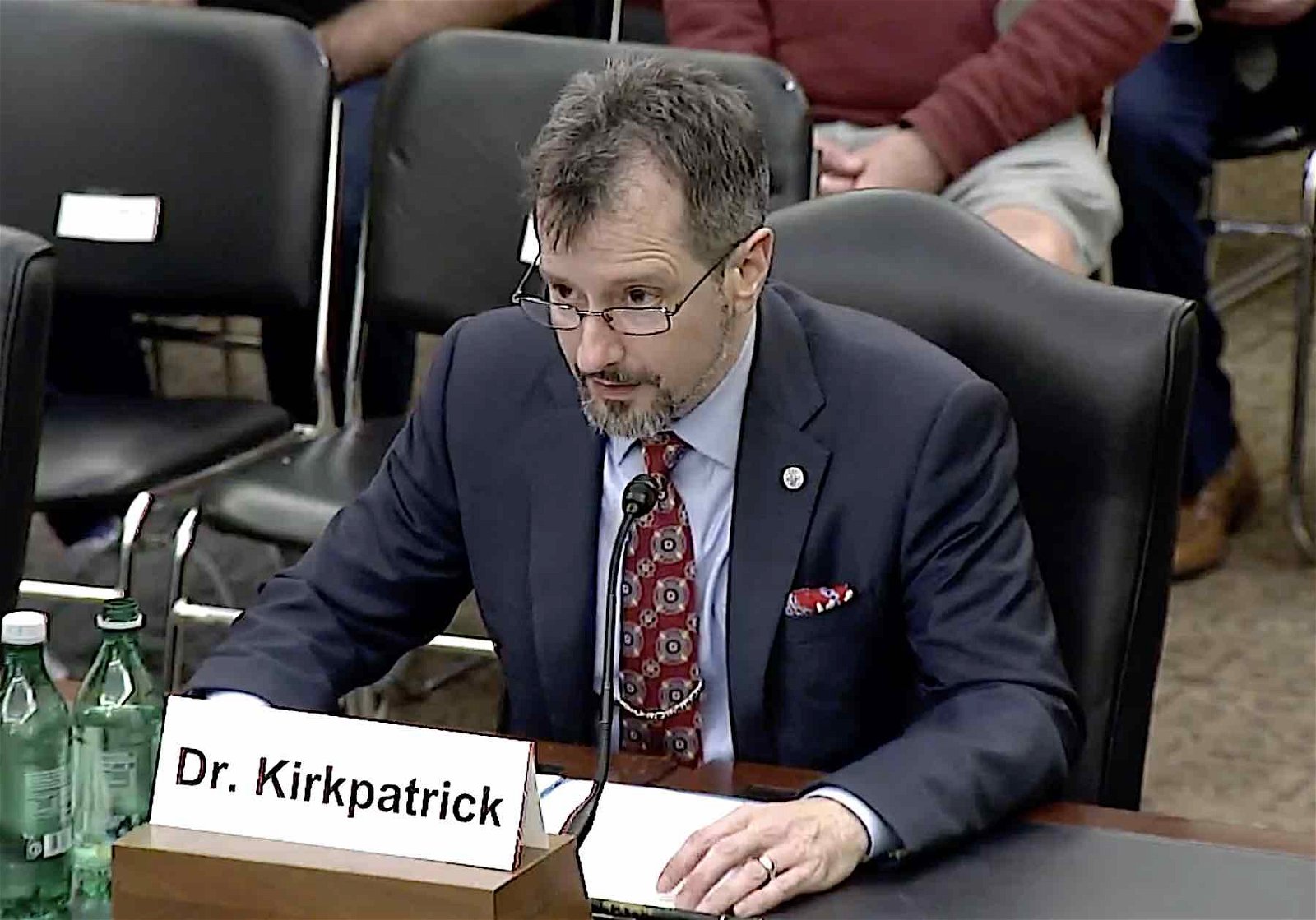

Welcome to this week’s installment of The Intelligence Brief… in the aftermath of this week’s Senate hearings on unidentified anomalous phenomena (UAP), many took to social media voicing dissatisfaction with the current efforts of the DoD’s All-domain Anomaly Resolution Office (AARO). However, a closer look at what unfolded yesterday shows that there was much more going on than many seemed to realize, and that the hearing amounted to being little more than a Rorschach test for people’s existing biases. This week, we’ll be looking at 1) a few of the main takeaways from yesterday’s event, 2) whether the history of UAP is being overlooked by AARO, 3) a look at the lack of evidence of extraterrestrials cited by Dr. Kirkpatrick, and what that means, and 4) AARO’s mission and its role in detecting foreign adversary technologies.
Sign up here to have The Intelligence Brief newsletter sent to your inbox each week.
Quote of the Week
“I want to underscore today that only a very small percentage of UAP reports display signatures that could reasonably be described as anomalous.”
-Dr. Sean Kirkpatrick
Latest Stories: Among the stories we’re covering this week at The Debrief, the U.S. Army is looking to upgrade its aging fleet of ISR aircraft by advancing its next-generation platform known as HADES. Elsewhere, A new video released by the Air Force Research Laboratory shows the lethal QUICKSINK smart bomb sinking a derelict cargo ship to the bottom of the Gulf of Mexico in one single shot, a feat usually reserved for submarine-launched torpedoes. These, and all our latest stories can be found at the end of this week’s newsletter.
Podcasts: This week in podcasts from The Debrief, Stephanie Gerk and MJ Banias hitch a ride on NASA’s X-59 supersonic airplane, and attempt using ultrasonic audio to hack into MJ’s smartphone on the latest installment of The Debrief Weekly Report. Meanwhile, this week on The Micah Hanks Program, I provide a full-length commentary and analysis of yesterday’s Senate hearings on UAP for those who want to take their deep-dive into yesterday’s testimony from Dr. Sean Kirkpatrick with them to the gym or their weekly commute. You can subscribe to all of The Debrief’s podcasts, including audio editions of Rebelliously Curious, by heading over to our Podcasts Page.
Video News: Also, tomorrow on Rebelliously Curious, Chrissy Newton is joined by Paul Hynek, a CFO, professor, Bitcoin enthusiast, and psychedelics advocate, as well as son of J. Allen Hynek, the former scientific advisor to the U.S. Air Force’s UFO investigations, otherwise known as Project Blue Book. You can also watch past episodes and other great content from The Debrief on our official YouTube Channel.
With all the housekeeping out of the way, it’s time to shift our attention over to yesterday’s Senate hearings on unidentified anomalous phenomena, and look at the main takeaways that were missed in the majority of the mainstream commentary that followed.
The Senate Hearing on Unidentified Anomalous Phenomena
Yesterday, Dr. Sean Kirkpatrick, director of the DoD’s All-domain Anomaly Resolution Office (AARO) testified at a special hearing before the Senate Armed Services Committee’s Subcommittee on Emerging Threats and Capabilities.
Seated on the opposite end of a large empty table from U.S. Senator Kirsten Gillibrand (D-NY), the hearing focused on elements of AARO’s operation ranging from its budget, to the kinds of unknown objects it is looking for, which in December were once again rebranded as “unidentified anomalous phenomena” during an off-camera briefing Kirkpatrick participated in with Under Secretary of Defense for Intelligence & Security (USDI&S) Ronald Moultrie.
“AARO is leading a focused effort to better characterize, understand, and attribute UAP,” Kirkpatrick said during Wednesday’s hearing, adding that “It would be naïve to believe that the resolution of all UAP can be solely accomplished by the DOD and IC alone,” emphasizing the complimentary scientific analysis that can be offered by the scientific community and the DOD’s industry partners, among others.
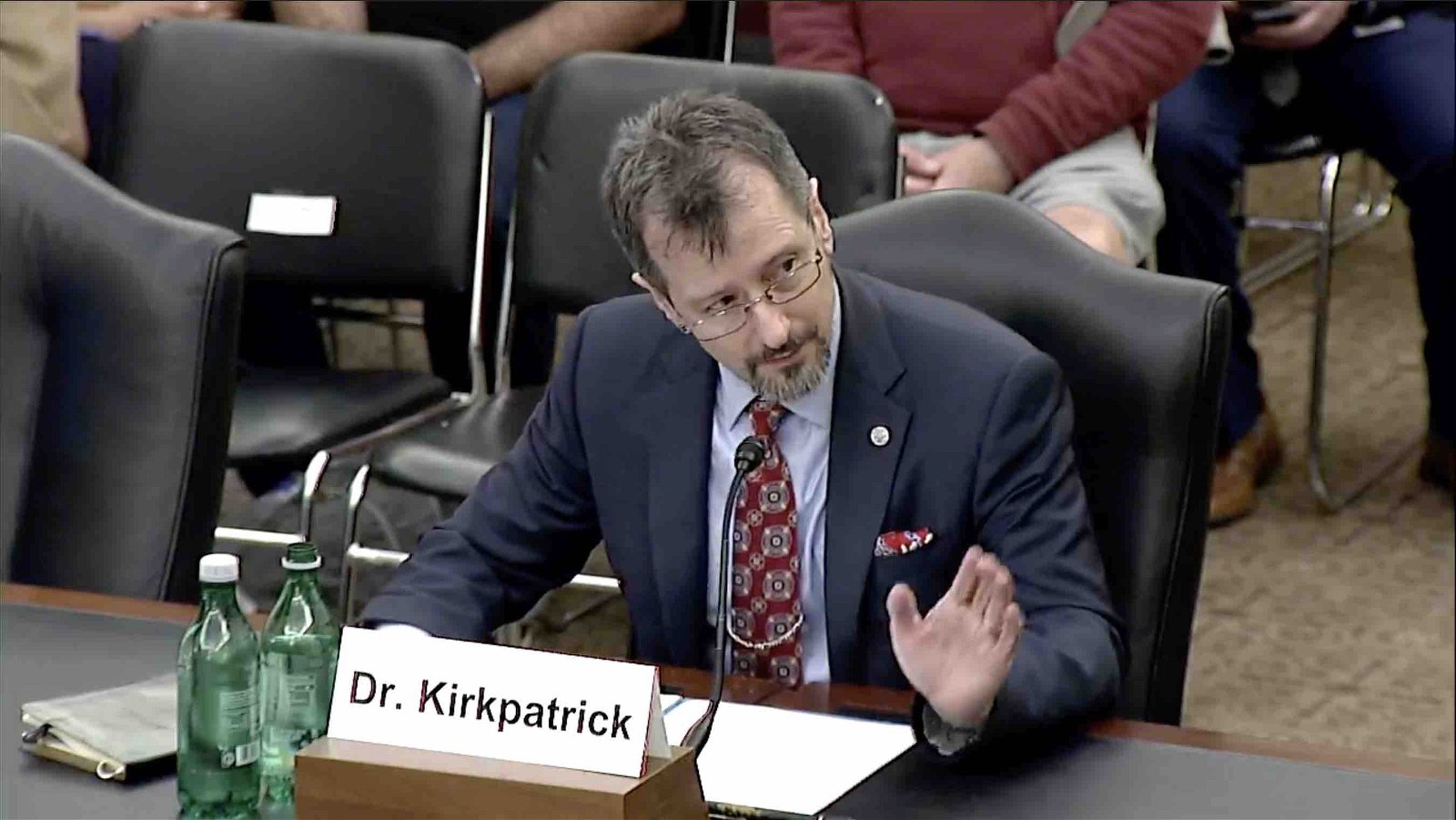

Presently, Kirkpatrick says AARO is tracking approximately 650 cases involving UAP collected primarily from U.S. government sources, and that in addition to a quarterly report set to be delivered to Congress in the days ahead, the next annual report is expected to be delivered as early as June or July.
Public reactions to the hearing were mixed and varied, although the responses appearing on social media—particularly those aired by the online community of UAP enthusiasts, including both proponents and skeptics of extraterrestrial UAP theories—largely seemed to express disapproval.
One reason for this may be on account of the perception that Kirkpatrick and AARO are downplaying truly anomalous phenomena, and instead seemingly gravitating toward the likelihood that most UAPs have mundane explanations or are possible evidence of advancements by foreign adversary nations like China or Russia. Another could involve the perception among skeptics that AARO is fundamentally a waste of taxpayer money since it isn’t finding any evidence of extraterrestrials or otherwise truly anomalous phenomena.
However, a deeper look at Kirkpatrick’s statements during the hearing reveals subtleties which, much like those aerial varieties of unidentified anomalous phenomena purportedly do, mostly went over people’s heads. Let’s look at some of the finer details that emerged during yesterday’s Senate hearing, and what they mean about the phenomena Kirkpatrick and his Office are studying.
Historical Perspectives on UAP
Among the issues UAP proponents have raised about U.S. government approaches toward resolving UAP in recent years has been its focus primarily on the perceived recency of the phenomenon. That is, incidents AARO and its predecessor, the UAP Task Force, have looked at mostly occurred in recent years.
“We cannot answer decades of questions about UAP all at once, but we must begin somewhere,” Kirkpatrick said during the hearing. “While I assure you that AARO will follow scientific evidence wherever it leads, I ask for your patience as DOD first prioritizes the safety and security of our military personnel and installations in all domains.”
Here, Kirkpatrick seems to be clear about the fact that his Office is looking at cases spanning several decades, with a few examples dating back to the mid-1990s. This much has been conveyed already in the past and was indicated by the title of a chart he shared during the hearing, which reads “UAP Reporting Trends: 1996-2023.”
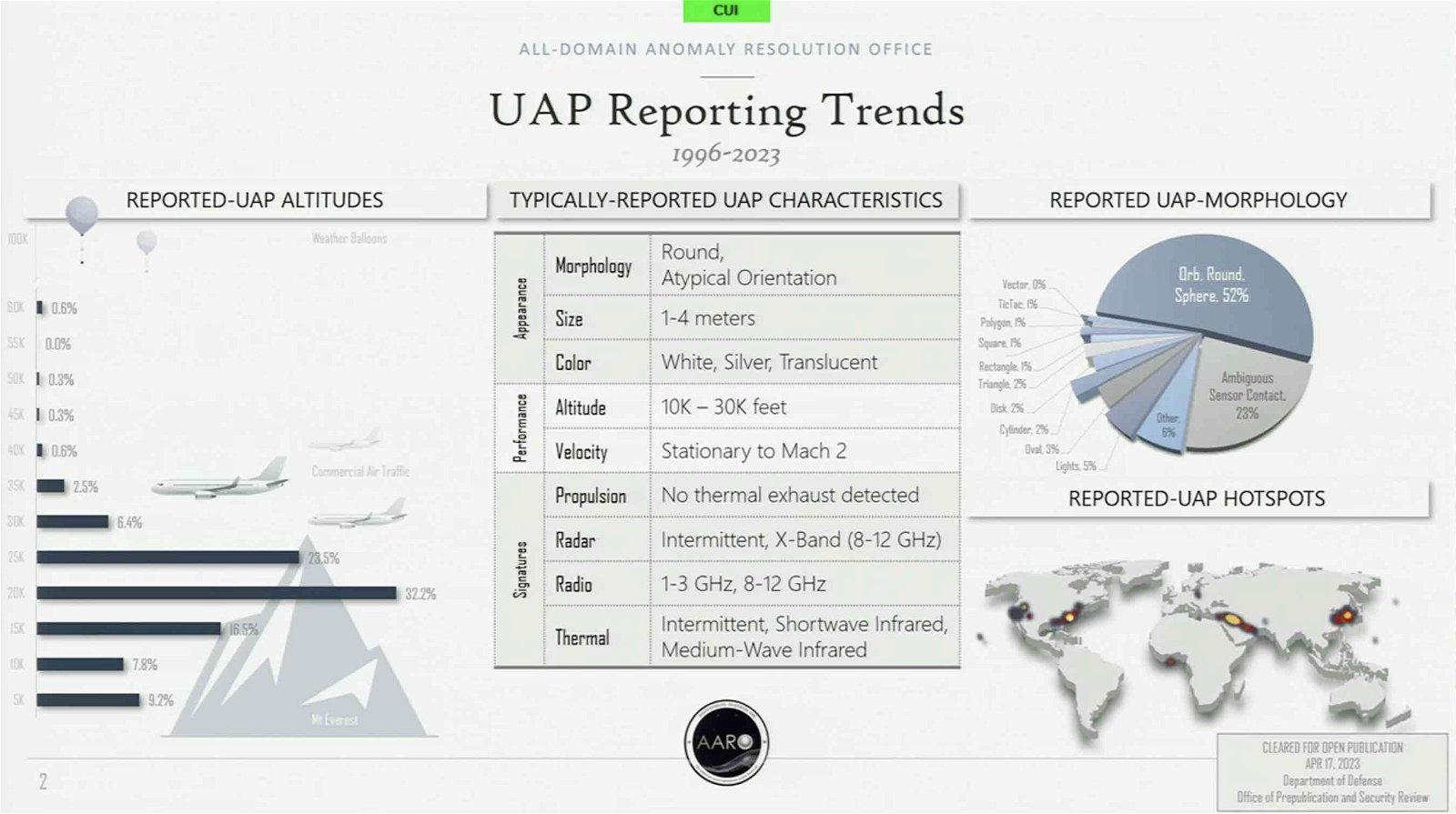

However, it should be noted that Kirkpatrick also said during his opening statements during the hearing that his Office is undertaking a complete historical review of information from past government efforts to collect information on UAP, as directed by Congress in language appearing in the Fiscal Year (FY) 2023 National Defense Authorization Act (NDAA).
Given that the language in that bill mandates that this historical review extends to material dating all the way back to 1945, this will be a monumental undertaking and one that is likely to be far from complete. The important point, however, is that historical perspectives on UAP aren’t being left out of the equation here, and Kirkpatrick is clear on that.
No Evidence of Extraterrestrials?
Another issue raised by many UAP proponents has to do with Kirkpatrick’s statements about the lack of any evidence supporting the extraterrestrial origins of UAP.
Early in yesterday’s hearing, Kirkpatrick stated that “AARO has found no credible evidence thus far of extraterrestrial activity, off-world technology, or objects that defy the known laws of physics,” adding that “In the event sufficient scientific data were ever obtained that a UAP encountered can only be explained by extraterrestrial origin, we are committed to working with our interagency partners at NASA to appropriately inform U.S. government leadership of its findings.”
This, of course, had been the statement most of the media latched onto in its coverage, as well as a few AARO advocates who maintain a hard line when it comes to the possibility of exotic origins behind any UAP (i.e., those who rule out extraterrestrials or paranormal theories about UAP but still recognize the significance of AARO’s mission to analyze and resolve unknown objects, some of which may likely stem from foreign adversaries).
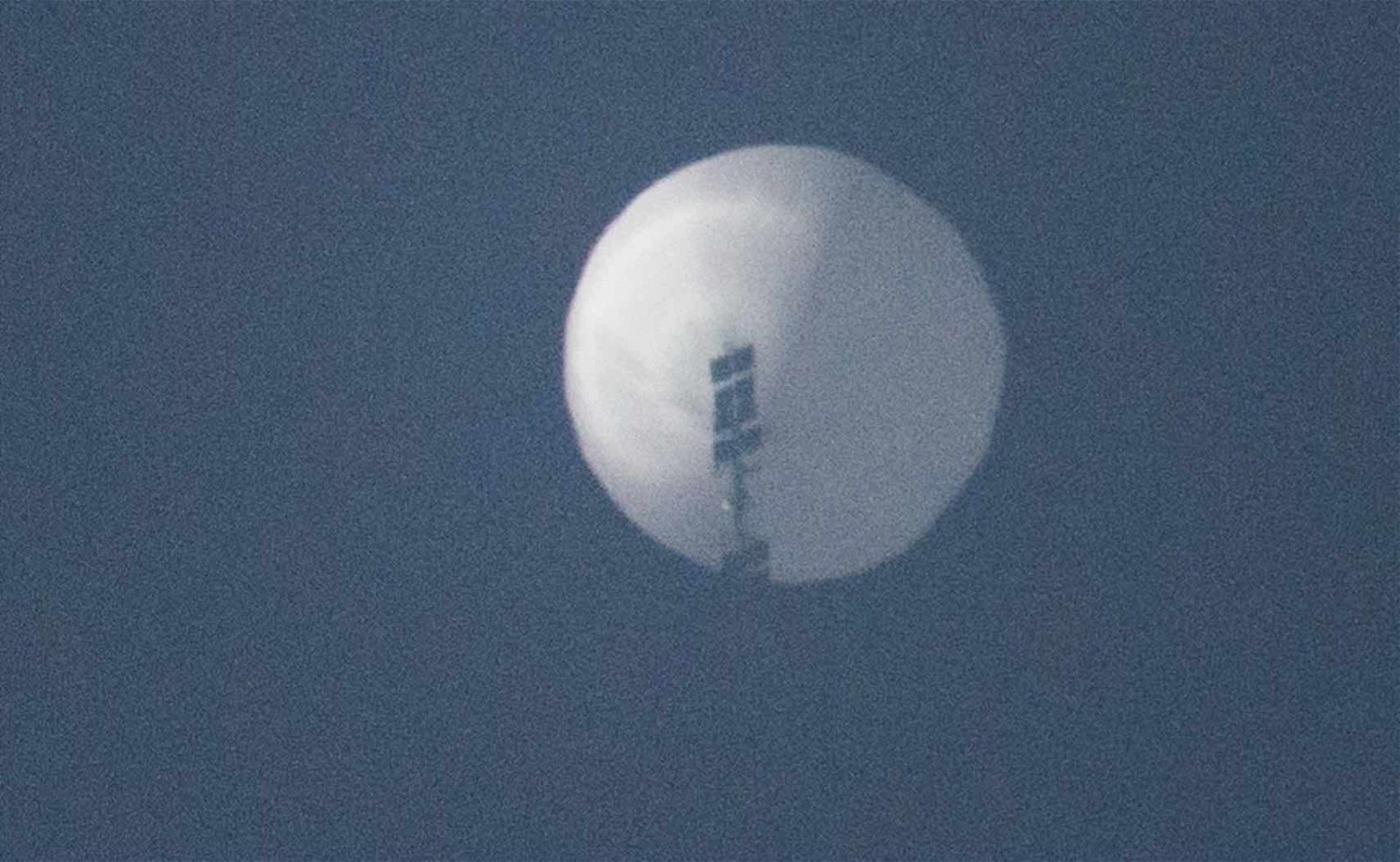

However, what many missed about what Kirkpatrick was saying is the context in which it was said. Immediately prior to this soundbite-worthy statement, Kirkpatrick explicitly addressed a handful of anomalous cases AARO is currently analyzing, which have occurred within virtually all domains (as the name of his Office suggests).
According to Kirkpatrick, “for the few cases in all domains—space, air, and sea—that do demonstrate potentially anomalous characteristics, AARO exists to help the DOD, IC, and interagency resolve those anomalous cases. In doing so, AARO is approaching these cases with the highest level of objectivity and analytic rigor. This includes physically testing and employing modeling and simulation to validate our analyses and underlying theories, and peer-reviewing those results within the U.S. government, industry partners, and appropriately cleared academic institutions before reaching any conclusions.”
What do we glean from this? First, note that Kirkpatrick didn’t say, “If we ever come across cases that may demonstrate anomalous characteristics…”, but rather, he explicitly refers to “for the few cases in all domains… that do demonstrate potentially anomalous characteristics.” This doesn’t confirm that the cases in this small batch are anomalous (at least not yet), but it does appear to convey that a small portion of AARO’s current data set have been flagged for potentially having such unique characteristics. They do exist, in other words, and appear to remain unresolved.
The second thing that should be considered here is that by virtue of remaining unresolved, they remain unknown… and if their origins aren’t known, then it would be inappropriate to speculate on their possible extraterrestrial or off-planet origins. To summarize then, 1) Kirkpatrick says there are a few potentially anomalous cases “in all domains,” 2) and that “AARO is approaching these cases with the highest level of objectivity,” meaning they aren’t leading with any biases, but that 3) AARO’s current analysis of such cases provides “no credible evidence thus far of extraterrestrial activity, off-world technology, or objects that defy the known laws of physics.” AARO appears to be maintaining an objective, scientific orientation toward the problem, in other words.
Are All UAPs Either Mundane Objects or Foreign Adversary Technology?
While Kirkpatrick’s statements on the lack of evidence supporting off-world technologies were taken by many proponents of extraterrestrial UAP theories as being dismissive–or even dishonest–skeptics latched onto this as meaning that all the UAP currently being examined by AARO that display seemingly “anomalous” capabilities are probably either examples of Russian or, more likely, China’s latest advanced surveillance capabilities.
As a deeper reading of Kirkpatrick’s statements above has already shown, AARO does not appear to have concluded that “all UAPs are either mundane objects or foreign technology,” but rather, that no examples it has currently analyzed provide credible evidence of ET activity. However, that’s not to say that AARO isn’t at least primarily concerned with potential capabilities China or other nations may possess.
“China, in particular, are on par or ahead of us in some areas,” Kirkpatrick said yesterday, in a particularly sobering series of remarks provided to U.S. Senator Joni Ernst.
“The adversary is not waiting,” Kirkpatrick said. “They are advancing, and they are advancing quickly,” also noting that U.S. foreign adversaries “are less risk-averse at technical advancement than we are. They are just willing to try things and see if it works.”
“Are there capabilities that could be employed against us in both in ISR and in a weapons fashion? Absolutely,” he said, citing “concerning indicators” pointing to such possibilities.
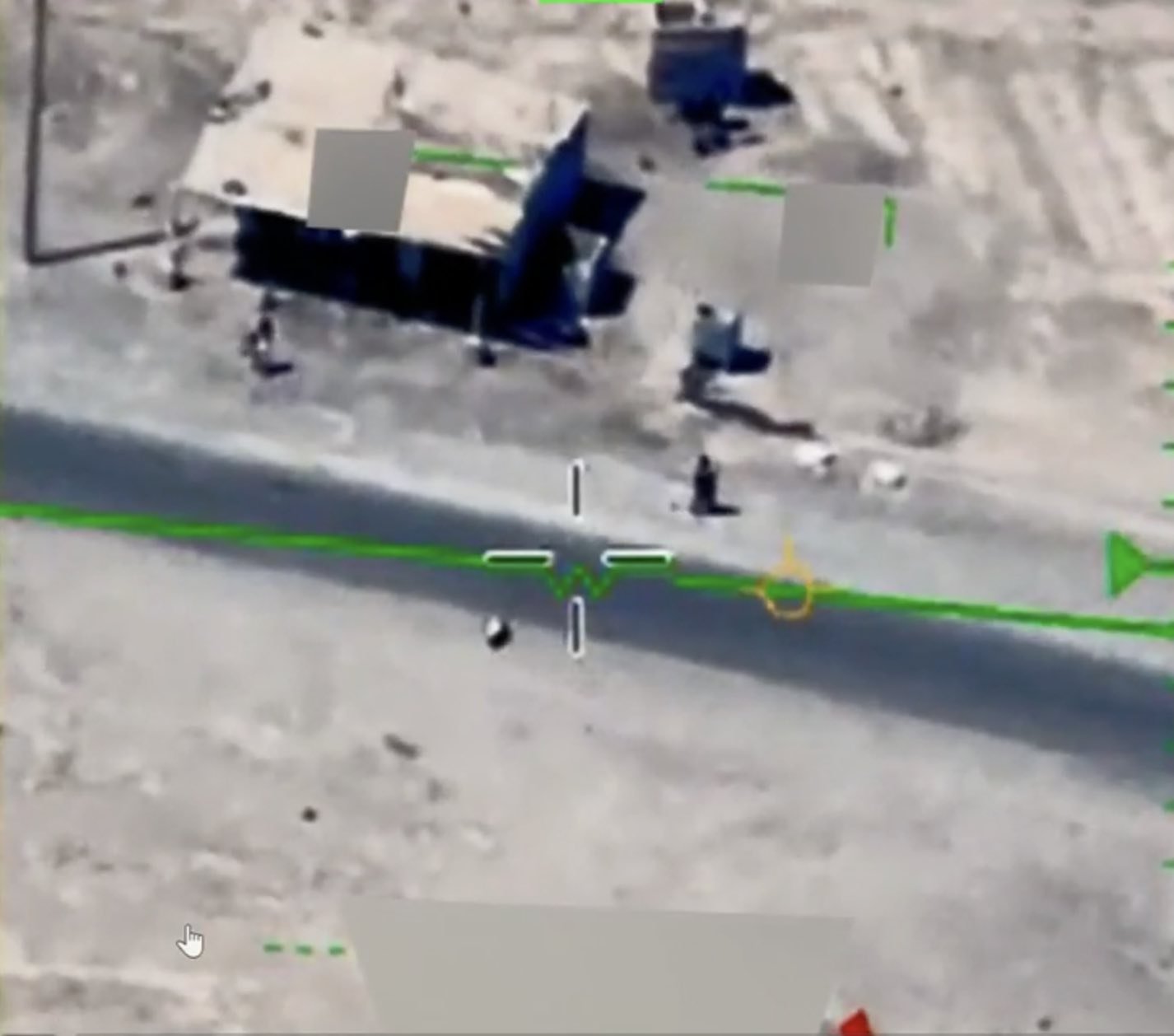

Here again, one must marvel at the astonishing speed at which many viewers seemed to interpret this to mean that the only important UAPs being analyzed are those representing foreign adversaries (as evidenced by much of the banter occurring on Twitter during and after Wednesday’s hearing). However, while it is true that AARO’s main focus is on protecting U.S. national security and other interests—the same as any other U.S. government agency—Kirkpatrick has also been clear that his Office intends to follow scientific methodology and thereby remains open to possibilities.
This much was evidenced in a statement we already reviewed earlier, where Kirkpatrick told Senator Gillibrand, “While I assure you that AARO will follow scientific evidence wherever it leads, I ask for your patience as DOD first prioritizes the safety and security of our military personnel and installations in all domains.”
So, a good, simplified summary of Kirkpatrick’s positions expressed during yesterday’s hearing, rather than “we haven’t found any aliens,” might instead be this: Let’s make sure national security is genuinely secure first, and then we’ll look at whether some of the anomalies from all domains in our remaining data set point to anything that might be surprising from a scientific perspective.
No, there isn’t any evidence of extraterrestrials… not yet at least, and of course, there may never be for all we know. However, AARO’s mission comprises a lot more than that, as yesterday’s hearing showed. That mission is also just getting underway, and based on a truly comprehensive and objective look at everything we heard yesterday, it also seems that mission is very necessary—perhaps even vital—to U.S. national security going forward.
That concludes this week’s installment of The Intelligence Brief. You can read past editions of The Intelligence Brief at our website, or if you found this installment online, don’t forget to subscribe and get future email editions from us here. Also, if you have a tip or other information you’d like to send along directly to me, you can email me at micah [@] thedebrief [dot] org, or Tweet at me @MicahHanks.


Here are the top stories we’re covering right now…
- Senate Hearing on UAP Reveals New Videos and Common Features, but Says No Proof of ET
On Wednesday, Dr. Sean Kirkpatrick, Director of the DoD’s AARO, testified before a Senate committee on the Pentagon’s investigations into UAP.
- The U.S. Army is Seeking Next-Gen Prototypes To Deliver HADES To Its Adversaries
The Army is looking to upgrade its aging fleet of ISR aircraft by advancing its next-generation platform known as HADES.
- New Concerning Details About Chinese Spy Balloon Technology Revealed in U.S. Classified Document Leak
The Chinese spy balloon that passed over the United States in February is believed to have possessed power generation capabilities able to support advanced radar technology, according to classified U.S. intelligence documents leaked online.
- The U.S. Department of Energy’s National Accelerator Facility Reveals Stunning Details in Virtual Tour
The Thomas Jefferson Lab has released an interactive map that lets users take a virtual tour of their National Accelerator Facility.
- Air Force Releases Footage of its Devastating ‘QUICKSINK’ Smart Bomb Blasting a Massive Cargo Ship in Half
A new video released by the Air Force Research Laboratory shows the lethal QUICKSINK smart bomb sinking a derelict cargo ship to the bottom of the Gulf of Mexico in one single shot, a feat usually reserved for submarine-launched torpedoes.
- AI-Powered Coding Revolution: ChatGPT, a Game Changer for Software Developers
“Is ChatGPT coming for my job”? Some longtime developers are wondering… it’s time to address the AI elephant in the room.
- Mystery of “Strange Metals” and Their Uncanny Behavior Is Closer to Being Resolved, Research Team Says
Researchers at the University of Toronto say they are closer than ever before to resolving the curious behavior of “strange metals,” a metallic phase of matter that is not described well in current theory.
- Unidentified Aerial Phenomena: Science “From Farm to Table”
Scientists, working with open data like the Galileo Project comprises, must help the U.S. government unravel the nature of UAP.
- If an AI Could Read Your Mind, Love
On this week’s episode, MJ and Stephanie contemplate whether teaching AI to read minds could mean the end of humanity.
- Classified Document Leak Reveals Presence of Western Special Forces in Ukraine, and Much More
This week we analyze a recent U.S. classified document leak that reveals new details on Western allies and the war in Ukraine.
- Let There Be Gravity? New Theory Says Gravity May Have Created the Universe’s First Light
A potentially “illuminating” new theory says that the universe’s first light may have been ripped from the fabric of space/time by the extreme forces of gravity in the form of gravitational waves that existed right after the big bang.
